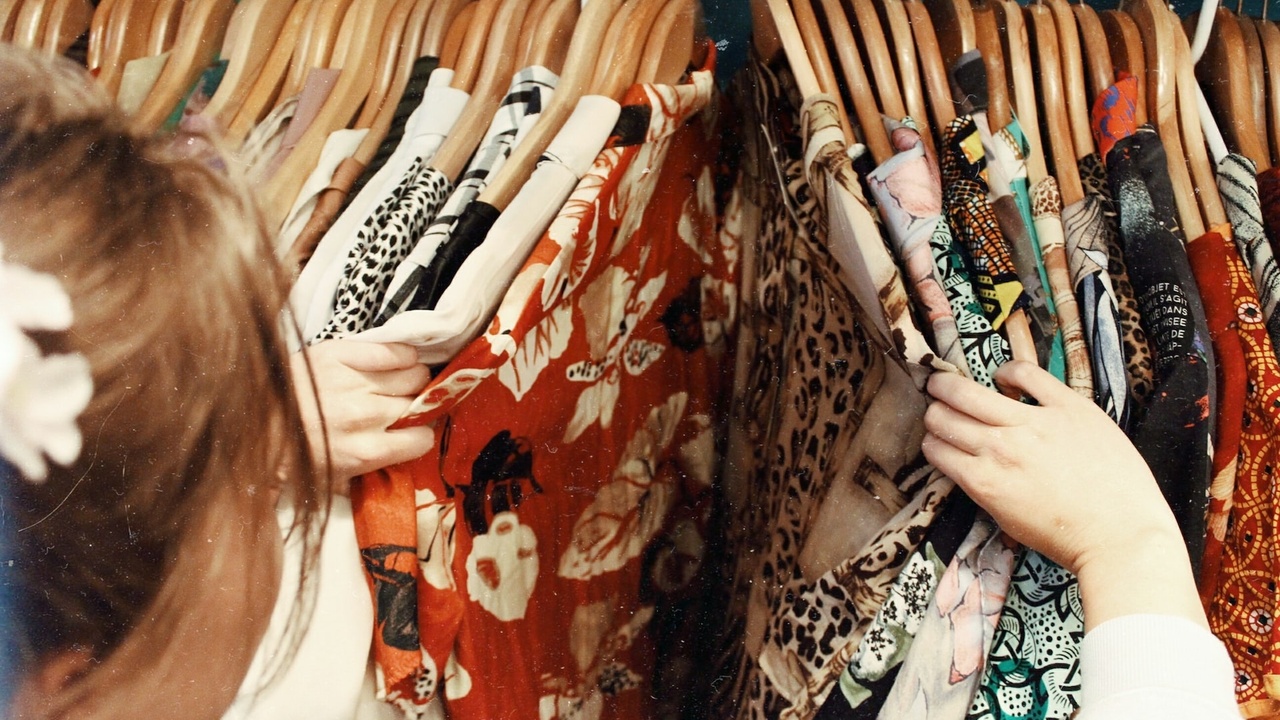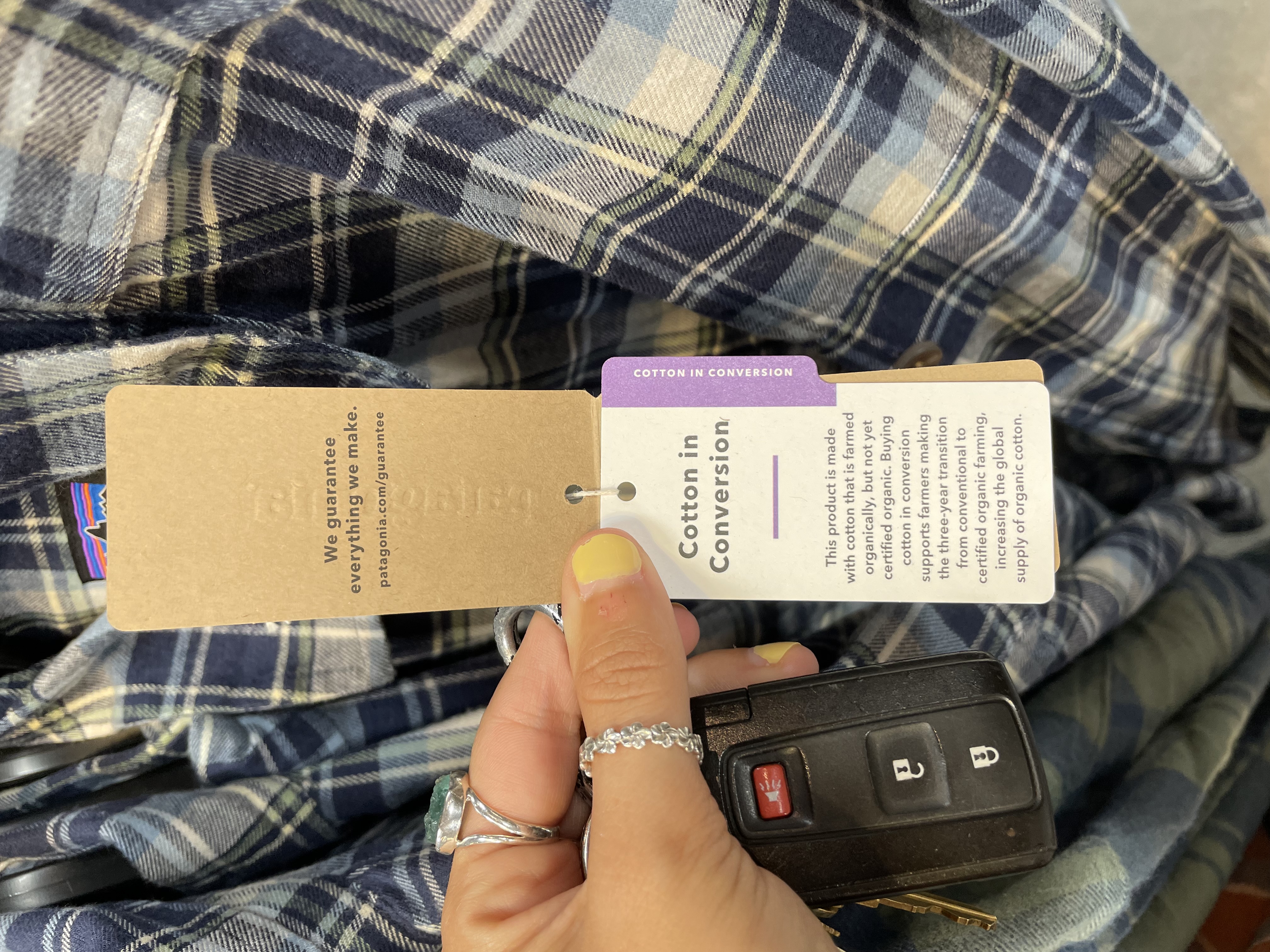Let's Talk About Consumption
Sep 15, 2022
I’ve talked to a few people about whose responsibility it is to drive real change in the apparel space. Does it fall on brands, consumers, or government to make the shift towards sustainable practices? I’m in the camp that every group needs to make an effort and that each sector has unique benefits that can make them effective drivers of change, but that change will be hard to come by if we continue to play the “pointing fingers” game.
I have seen tons of stories in the sustainability space blaming consumers for overconsumption and that one of the main reasons apparel brands overproduce is to keep up with consumer demand (what a vicious cycle, right!?). I have also seen countless stories condemning brands for simply not doing enough, and while I agree that progress has been too slow for too long, it seems harsh to cut a brand down for trying to take a step in the right direction. Government is a behemoth in its own right, so I’ll save that conversation for an entirely different post. So what’s (at least) the one thing that ties brands and consumers together? Consumption.
I’m certainly no pillar for sustainable consumption - my entire life I’ve loved clothes. When I was 16, I got my first job working at a well-known retailer and became accustomed to getting new clothes every week using my employee discount. With money to burn and not a care in the world, I continued this lifestyle for years. I had heard talk here and there about social and environmental issues in the apparel industry, but I foolishly thought this was exclusive to the fast fashion industry. It wasn’t until I got to my last retail job, this time with a large footwear brand, that things really started to sink in.
I started interning here at The Underswell around that time and I was learning so much about the apparel and footwear industry that I had never been exposed to before. I took our course and learned about tragedies like Rana Plaza and saw footage of toxic effluent entering waterways, and it hit me -
“I’ll never feel the effects of the apparel industry the way these people have.”
This was the first step for me and I decided I was going to try my hardest to never buy a brand new piece of clothing ever again.
The final nail in the coffin came when I was at work one day during the holiday season and a customer came up to me and asked “how many kids died to make this shoe?” His tone was smug and childish as if he knew the issue of child labor would never directly impact him and his family. Barely keeping my composure, I told him it was no laughing matter. Looking back, I can acknowledge that this customer was ignorant and lacked the education to know better, but this event took what was already a burning passion and turned it into a full-blown wildfire inside me.
One question, however, still lingers in my head from time to time. If this customer knows child labor occurs in the fashion industry…why is he still choosing to support it?
It’s unclear to me whether the brand I worked for used suppliers who employed children (supply chain traceability and transparency are still in its infancy at this brand), but I genuinely think if they knew about it that they would switch suppliers. However, for this sad sack who thinks child labor is funny, I have little hope. But once again, another question comes to mind - what are consumers willing to sacrifice in order to get what they want?
If you haven’t seen it, IBM has a great study that looks at sustainability and consumer behavior. Cost is one of the greatest barriers that keep consumers from making more sustainable choices. And cost is what makes fast fashion brands so appealing, especially to those in younger generations with fewer disposable funds. For those who can afford a higher price point and more sustainable options, does this help or harm the argument of consumption?
I said earlier that I was going to avoid buying new clothes altogether, but I went back on that commitment earlier this week. I bought these shorts for my boyfriend but I went back and forth all day before I hit that “place order” button. Made from 100% recycled nylon and sewn in a Fair Trade-certified factory, it’s not the worst option on the planet, but it has an impact nonetheless. When I talked to Derek about my quandary, he told me about the news involving Patagonia and that at least they’re one of the better (ok, maybe even best) brands out there and that perhaps I was doing a “good thing” by supporting them. Yet still, there’s a little pit in my stomach and a voice in my head saying “did you really need to buy that?”
We live in a world obsessed with consumption and staying on trend, but as consumers trying to balance sustainability and supporting our favorite brands it often feels like a tightrope walk. What would be amazing to see is collaboration between brands and consumers. Instead of pointing fingers over whose responsibility it is to clean up the apparel industry, brands and consumers have the opportunity to communicate with each other. While consumers can reach out to brands and push for more sustainability initiatives, brands can use marketing to communicate initiatives with consumers. Take, for example, the picture below. I took this picture of a Patagonia hangtag over the weekend and I think it perfectly embodies what effective sustainability marketing looks like.

If consumers can find a healthy, sustainable way to consume that is still profitable to the larger business at hand, we’ll be golden. This is probably easier said than done, but I strongly believe that starting with education and empathy first, makes the process a whole lot easier.
So, what can you do as a consumer to limit your impact?
- Avoid buying new as much as possible - there are some great recommerce/rental sites out there! Check out Depop, In the Loop, and your local thrift store
- If you buy new, try to support brands and products that are more sustainable. Looking for certifications is a great place to start
- Learn as much as you can. Dive into YouTube, read news articles, and check out our resources to get you started on your journey
What if you’re also an employee at an apparel/footwear brand?
- Learn as much as you can (and get your coworkers involved!) We’re here to help if you need some guidance, shoot us an email below
- Be honest about your products and initiatives. Don’t over-inflate how sustainable and great your product is, but do explain to people why it’s a better option
- Push to implement a recommerce program! Some examples of this are Patagonia’s Worn Wear, Nudie Jeans, and Levi’s SecondHand. And be sure to know about The Renewal Workshop.
If you have any thoughts on consumption or want help on any sustainability-related topic, email us at [email protected]. Want to talk to other sustainability lovers? Check out our LinkedIn Group!
Thank you for joining us and we’ll see you guys next time!
McKenzie
#keeplearning #sustainablefashion
